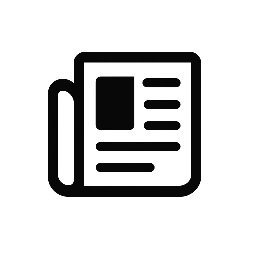In a harrowing chapter of violence that continues to reverberate across Seattle and beyond, the King County Medical Examiner’s Office has officially identified the three individuals fatally shot in the early morning hours of May 17, 2025, in Pioneer Square—Seattle’s historic downtown district. The victims—19-year-old Keilani Renae Harris, 27-year-old Briaun Keith Dinish-Lomelli, and 24-year-old August Alfred Lastrappe, all residents of Seattle—each died from multiple gunshot wounds in what authorities have confirmed were homicides. Their lives were cut tragically short in a mass shooting that has both devastated their families and cast a long shadow over a city grappling with public safety in one of its most iconic neighborhoods.
The triple homicide unfolded just after 1 a.m., near the intersection of 2nd Avenue South and South Main Street—an area normally bustling with nightlife, culture, and the steady hum of weekend crowds. The shooting took place not far from the Seattle Fire Department Headquarters, lending even greater urgency to the police response. According to the Seattle Police Department, multiple 911 calls flooded in reporting the sound of gunfire, and officers were dispatched to the scene within minutes. Upon arrival, they discovered four individuals suffering from gunshot wounds. Tragically, two men and one woman—later confirmed to be Dinish-Lomelli, Lastrappe, and Harris—were pronounced dead at the scene. The fourth victim survived and is currently recovering, though officials have released no further details about that individual’s identity or condition.
At the heart of this tragedy is a question that remains unanswered: what precipitated such a brutal act of violence in one of Seattle’s most historic and heavily trafficked areas? As of this writing, no arrests have been made, no suspects publicly named, and no motive established. The city is now in the grip of a fast-moving and expansive investigation, with detectives scouring the crime scene for evidence, pursuing leads, and working around the clock to piece together the events that culminated in one of the city’s deadliest shootings in recent months.
The lack of a clear motive or suspect has only intensified public concern. According to Seattle Police Chief Shon Barnes, investigators are especially interested in identifying and locating the driver of a black Tesla—possibly a Model Y—that was observed driving through Pioneer Square around the time of the incident. Officials believe the car’s sophisticated onboard camera system may have inadvertently recorded footage vital to the investigation. As Chief Barnes noted, “We know that these vehicles are equipped with video evidence and that they write over very quickly. It’s important to get that information out now before it’s lost.” The urgency behind this plea reflects both the challenges and the potential that modern technology brings to high-stakes criminal investigations.
But while investigators work tirelessly behind the scenes, Seattle residents are left to contend with the reality of a mass shooting in the very heart of their city. Pioneer Square, often celebrated for its architectural charm and historic significance as Seattle’s oldest neighborhood, is now also the scene of profound grief. The district, known for cobblestone streets, Victorian Romanesque buildings, and a vibrant mix of bars, galleries, and tech startups, has now become a symbolic ground zero for a city wrestling with broader questions around gun violence, policing, and community safety.
Each of the three victims adds a layer of personal tragedy to the unfolding narrative. Keilani Renae Harris, just 19 years old, was in the spring of her life. As a young woman from Seattle, her presence in Pioneer Square that night could easily have been part of the normal rhythm of youth—gathering with friends, seeking connection, or simply enjoying the pulse of city life. That her life was taken in such a sudden and brutal manner adds a level of heartbreak that is difficult to quantify. At 27, Briaun Keith Dinish-Lomelli was a man likely straddling the edge of youth and full adulthood, his death extinguishing a lifetime of possibilities. And at 24, August Alfred Lastrappe was only just beginning to solidify his place in the world. Each name now enters the tragic ledger of lives lost to senseless violence, their stories severed prematurely by bullets whose purpose remains unknown.
Homicide detectives are now conducting a wide-ranging investigation, and they are calling on the public for help. Community members who were present in the area during the time of the shooting, or who might have dashcam, smartphone, or security footage, are being urged to come forward. The Seattle Police Department’s Violent Crimes Tip Line (206-233-5000) and Crime Stoppers of Puget Sound (1-800-222-TIPS) are open and accepting information, with the assurance that tipsters may remain anonymous.
This incident marks one of the most severe instances of gun violence in recent Seattle history and adds to a growing national discourse on urban crime and gun-related homicides. In recent years, major American cities have grappled with waves of gun violence that defy easy categorization. While the COVID-19 pandemic disrupted many social systems and increased economic instability—two factors often correlated with rises in crime—the subsequent years have only added complexity to the picture. In Seattle, like in many cities, officials have been under pressure to both reform policing practices and ensure public safety, often while navigating reduced budgets and shifting political priorities.
Pioneer Square, specifically, has seen renewed attention in this regard. Long considered a cultural and architectural gem, the neighborhood has also struggled with concerns around homelessness, substance use, and sporadic violence. City officials have often walked a tightrope between revitalization efforts and broader public safety initiatives, attempting to balance economic development with social equity. The mass shooting on May 17, however, has intensified scrutiny on whether these efforts have been enough—and what more needs to be done to ensure that tragedies like this do not become recurring chapters in the city’s story.
Even as the investigation unfolds, the emotional toll on the community is impossible to ignore. Makeshift memorials have begun to appear near the site of the shooting, with candles, flowers, and handwritten messages dotting the sidewalks. Friends and family of the victims have taken to social media to share memories and express grief, while others have voiced anger and fear about the broader implications of this violence. The community’s mourning is matched by a collective call for accountability—not only for the shooter or shooters involved, but for a system that allowed such violence to erupt in a public square.
City leaders have responded with statements of solidarity and promises of action, but residents remain watchful. The mass shooting has become more than just a local crime story; it is a flashpoint in the ongoing debate about safety, justice, and the future of America’s urban centers. How Seattle responds—in policy, policing, and community healing—will serve as a bellwether for how cities nationwide confront the persistent threat of gun violence.
The presence of a black Tesla, potentially bearing undiscovered evidence, has also raised the stakes. Tesla vehicles are known for their sophisticated camera systems, with up to eight exterior cameras capable of recording 360-degree footage. These systems, while originally designed for autonomous driving and collision evidence, have increasingly become tools in criminal investigations. In this case, any footage from the Tesla could provide vital clues: a glimpse of the shooter, an escape route, a timeline of events. But time is of the essence. As Chief Barnes emphasized, Tesla’s security systems automatically overwrite stored footage unless manually preserved, and the longer the delay in retrieving that footage, the slimmer the chances it still exists.
The search for this vehicle, and the plea to its driver, is emblematic of the investigative urgency. It’s also a testament to the evolving intersection between consumer technology and public safety. Where once police relied on eyewitnesses and physical evidence alone, today’s investigations unfold across a digital landscape—one that includes surveillance footage, smartphone data, license plate readers, and increasingly, the embedded tech of everyday vehicles. It is a new frontier for law enforcement, with both promise and peril.
In the meantime, the names of Keilani Renae Harris, Briaun Keith Dinish-Lomelli, and August Alfred Lastrappe are etched into the conscience of a city in mourning. Their deaths are not just statistics; they are stories interrupted, communities wounded, and futures stolen. As the investigation continues, the hope remains that justice will follow—swift, decisive, and complete. Yet even as that hope endures, the broader reckoning for Seattle—and for American cities more broadly—has only just begun.
Seattle, for all its innovation and resilience, now finds itself asking: how did this happen, and how can it be prevented from happening again? These are not new questions, but they are now newly urgent. The answers will not come easily, nor will they come without introspection and collective will. But for the families of Keilani, Briaun, and August—for the friends who mourn, the neighbors who fear, and the city that grieves—those answers are not optional. They are essential.


Leave a Reply